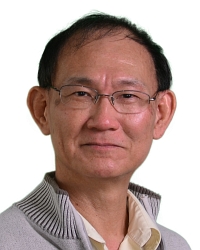TR2017-110
Nanostructure enhanced near-field radiative heat transfer and designs for energy conversion devices
-
- , "Nanostructure enhanced near-field radiative heat transfer and designs for energy conversion devices", SPIE Optics and Photonics, DOI: 10.1109/MWSCAS.2017.8053131, August 2017.BibTeX TR2017-110 PDF
- @inproceedings{Wang2017aug,
- author = {Wang, Bingnan and Lin, Chungwei and Teo, Koon Hoo},
- title = {Nanostructure enhanced near-field radiative heat transfer and designs for energy conversion devices},
- booktitle = {SPIE Optics and Photonics},
- year = 2017,
- month = aug,
- doi = {10.1109/MWSCAS.2017.8053131},
- url = {https://www.merl.com/publications/TR2017-110}
- }
- , "Nanostructure enhanced near-field radiative heat transfer and designs for energy conversion devices", SPIE Optics and Photonics, DOI: 10.1109/MWSCAS.2017.8053131, August 2017.
-
MERL Contacts:
-
Research Area:
Abstract:
Near-field radiative heat transfer can exceed the blackbody limit, and this property has been explored toward energy transfer and conversion applications, such as thermophtovoltaic (TPV) devices, radiative cooling devices, and thermoradiative (TR) devices. The coupling of resonant modes between two surfaces is important in near-field heat transfer and near-field TPV and TR systems. It was shown that the coupling of resonant modes enhances the transmissivity between two coupled objects, which further determines the radiative heat transfer and energy conversion. Surface plasmon polaritons (SPPs), which are surface resonances existing on metal surfaces, are commonly used for such systems. While the frequency of SPP resonance is fixed for a planar emitter, a nanostructured emitter supports additional resonances such as SPP or cavity modes with lower frequencies that are closer to the bandgap energy of a typical PV cell. We show that the nanostrctured designs significantly improves the near-field radiative power transfer, and electric power output for a TR system.


